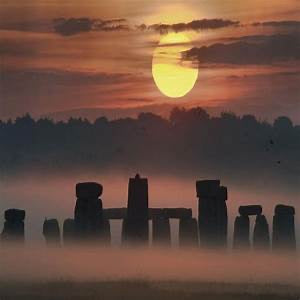SUMMER SOLSTICE
June 16, 2021

Ever wonder how the summer solstice gets its name? The name solstice is a combination of the Latin word "sol," which means sun and the word ” sistere" which translates to "standing still.” Depending on the shift of the calendar, the summer solstice occurs sometime between June 20 and June 22 in the Northern Hemisphere and between December 20 and December 23 in the Southern Hemisphere. The same dates in the opposite hemisphere are referred to as the winter solstice. Since prehistory, the summer solstice has been seen as a significant time of year in many cultures and has been marked by festivals and rituals.1
Summer Solstice traditions from around the world
From rock concerts to Stonehenge, people in the northern hemisphere have been celebrating the longest day of the year for centuries. Many traditions throughout time have celebrated the Solstices — Ancient Egypt, the Aztecs of Mexico, Chinese, Chumash Indians of California, and Indigenous Europeans. Western civilizations have for centuries celebrated this first day of summer often called Midsummer (see Shakespeare), or St. John’s Day. The Chinese mark the day by honoring Li, the Chinese Goddess of Light. Throughout history, with so much light being showered upon the Earth on this day, it’s been known as one of the most powerful days of the year for spiritual growth and healing.2
Fun Facts about Summer Solstice
Summer Solstice Does Not Occur Only on Earth- All planets in the solar system experience summer solstice at different periods. For example, the midsummer on Mars is experienced just days after the one on earth.
Midnight Sports - Prolonged periods of sunlight in the northern hemisphere mean that activities that typically happen during the day can be done at night while daylight is still there. In Alaska, midnight baseball is played to mark the phenomenon.
Distance From the Sun- Among the most popular misconception is that the earth is nearest to the sun during midsummer, (perihelion). In the real sense, during that period the earth's northern hemisphere is furthest from the sun (aphelion).
Sunlight Variation - While the longest day on the equator is typically about 12 hours, the Northern hemisphere can experience days that are far longer. For example, the North Pole can experience as much as 24 hours of sunlight. Areas such as Pennsylvania and northern California experience over 15 hours of daylight while Maine and Washington experience about 16 hours.
The Longest Day in History - The longest day in history was measured in 1912. The day lasted 24 hours and about four milliseconds.
Ancient Celebrations - In many cultures, across the world summer solstice was celebrated in various ways. Several ancient structures were also constructed in alignment to the period. For example, in ancient Maya cities, buildings were built such that they aligned to the sun in midsummer. During the period, residents of the cities would gather to witness what appeared to be their king commanding the heavens. The ancient Stonehenge in Britain also has architectural links to the summer solstice.
Higher Amounts of Sunlight Does Not Mean More Heat - Despite receiving long periods of daylight, the northern hemisphere does not experience the hottest day during midsummer. Earth's atmosphere and oceans absorb the sun's rays and release the heat after several weeks.
Absence of Shadows - At noon in areas along the Northern Tropics, shadows cannot be seen.
Happiness And Summer Solstice - A study analyzing posts from 2 million Twitter users found that positive messages were sent out more frequently when days were longer. Other studies found that people exhibited higher happiness levels earlier in the day. One can, therefore, conclude that the levels of happiness are relatively higher during midsummer.3
Reference
-
-
-
-

